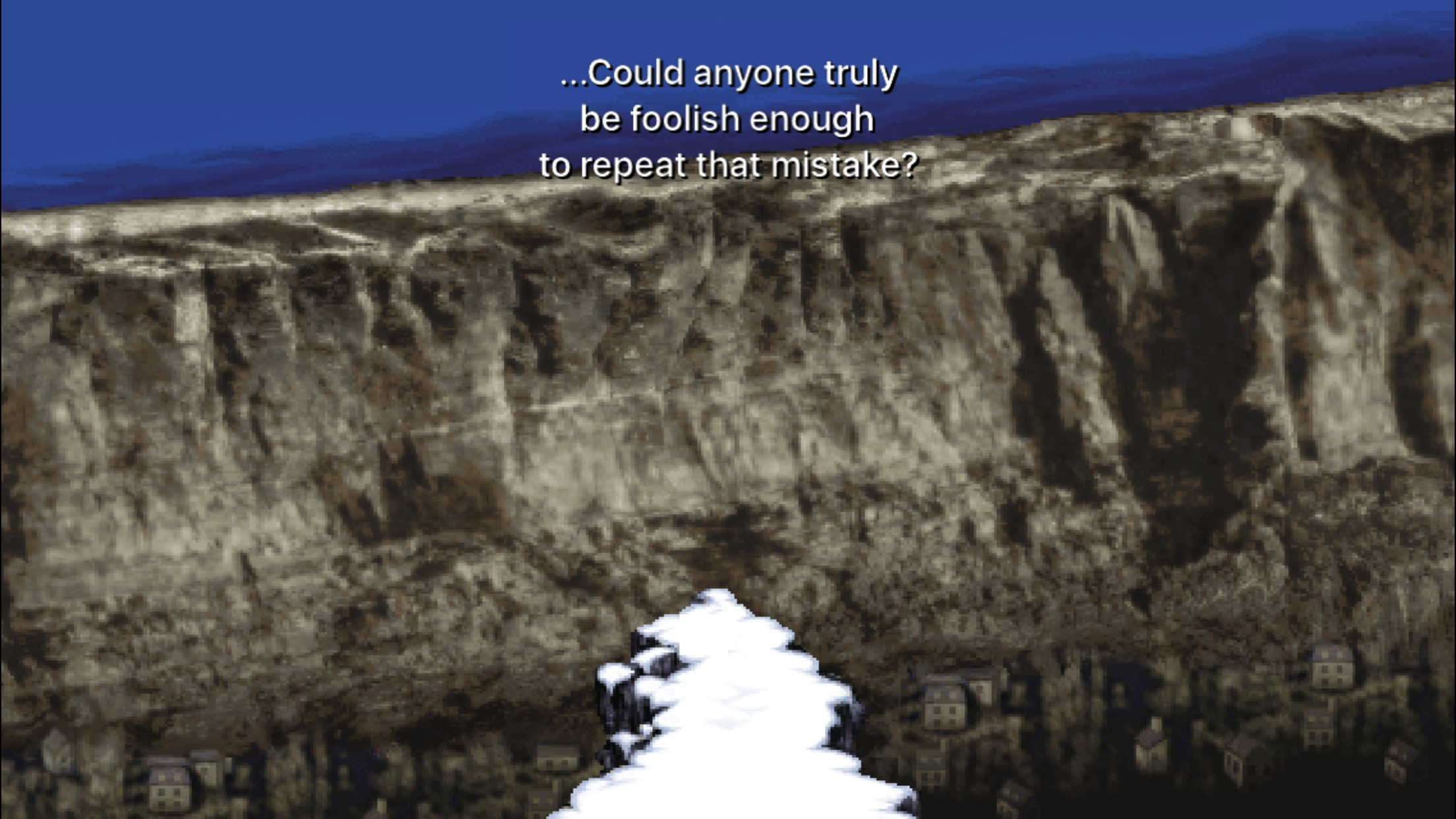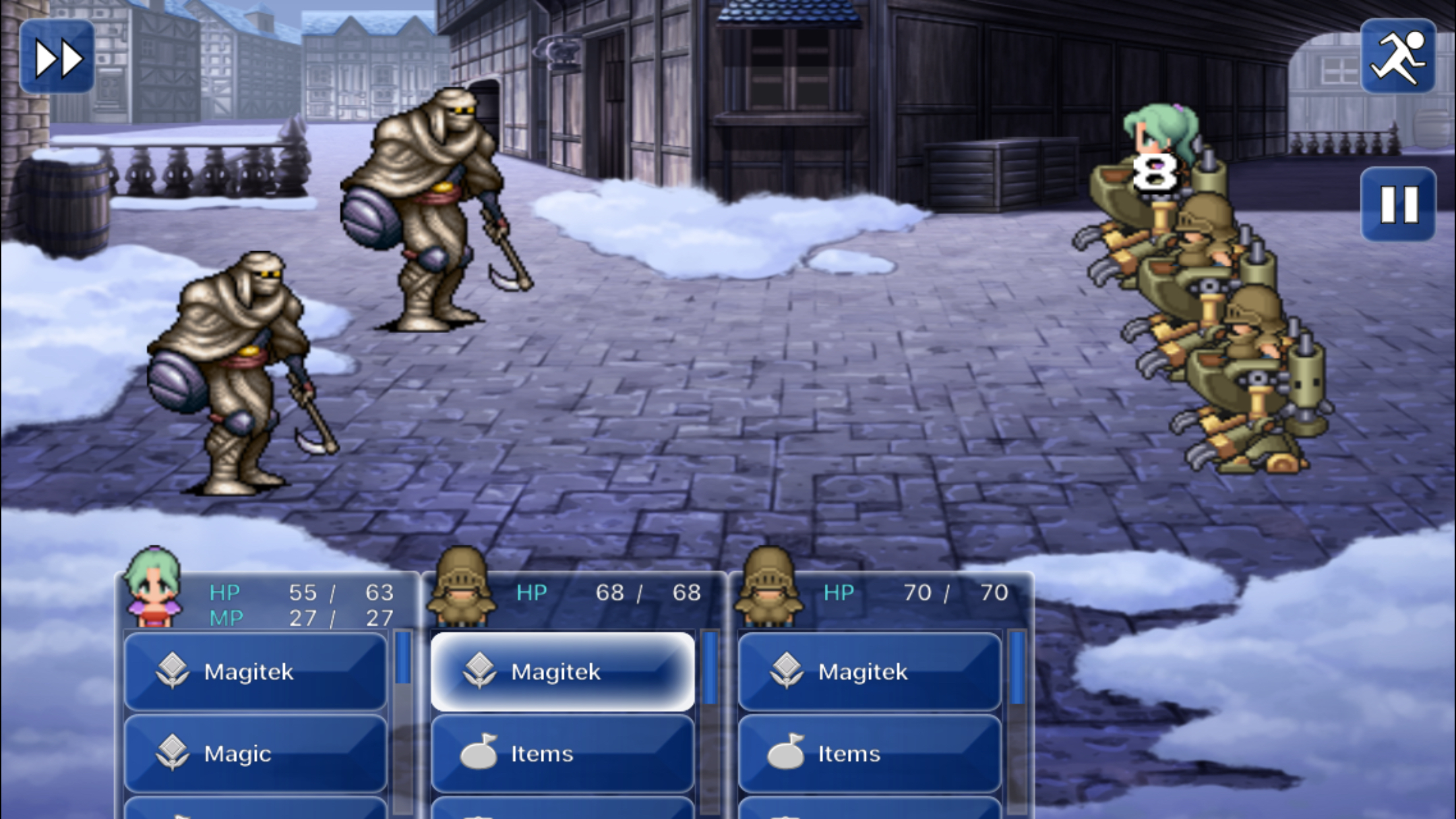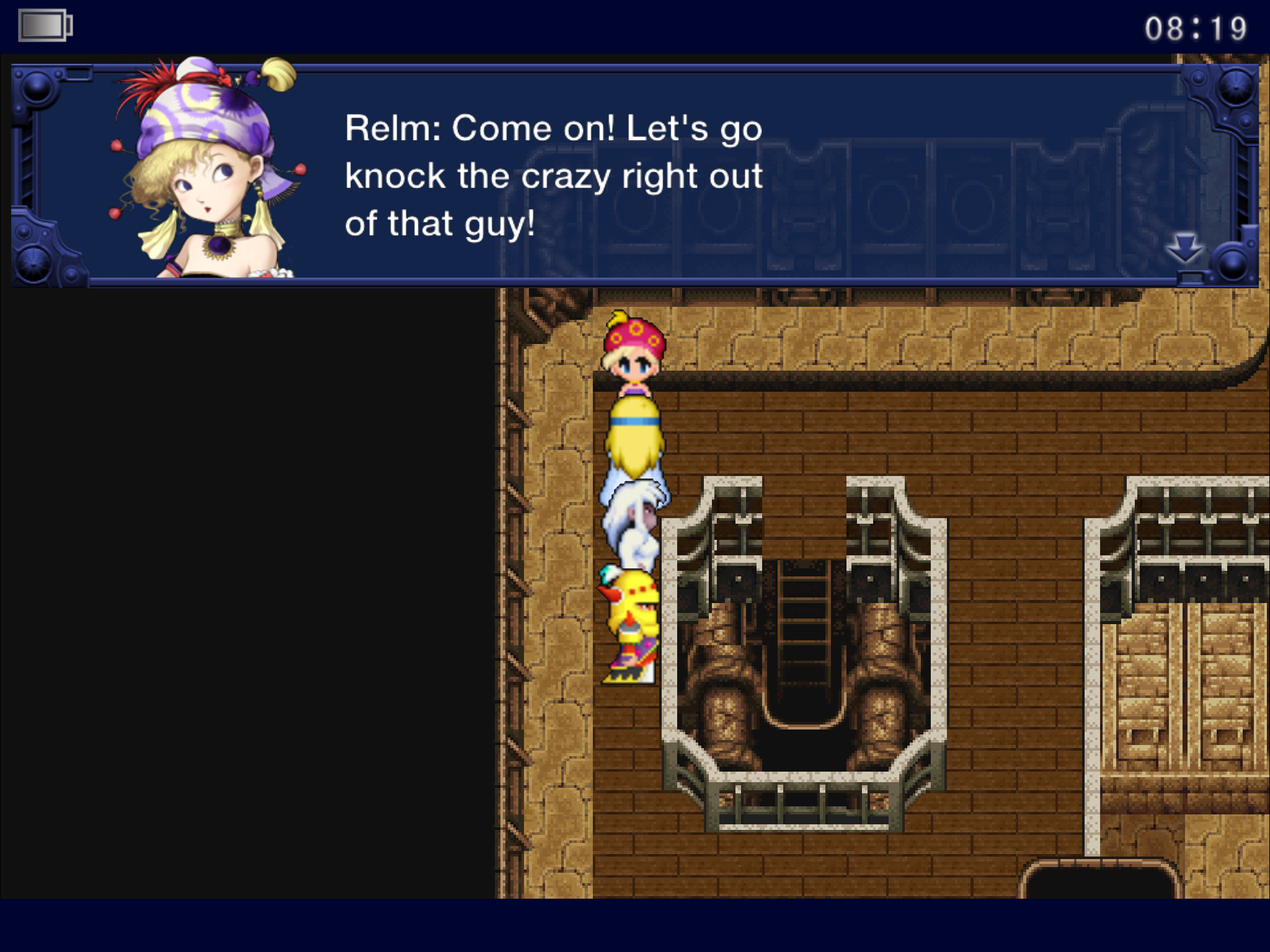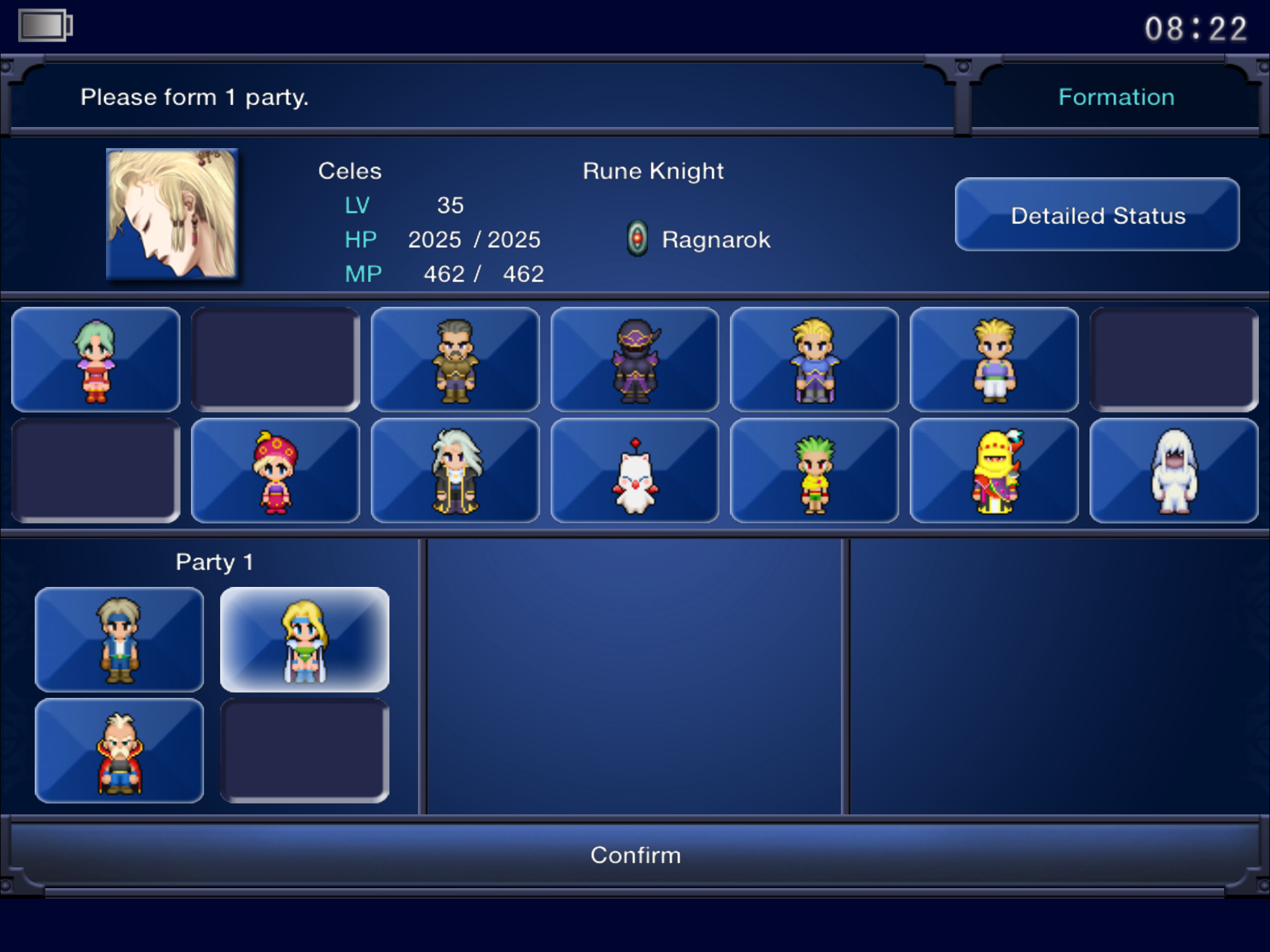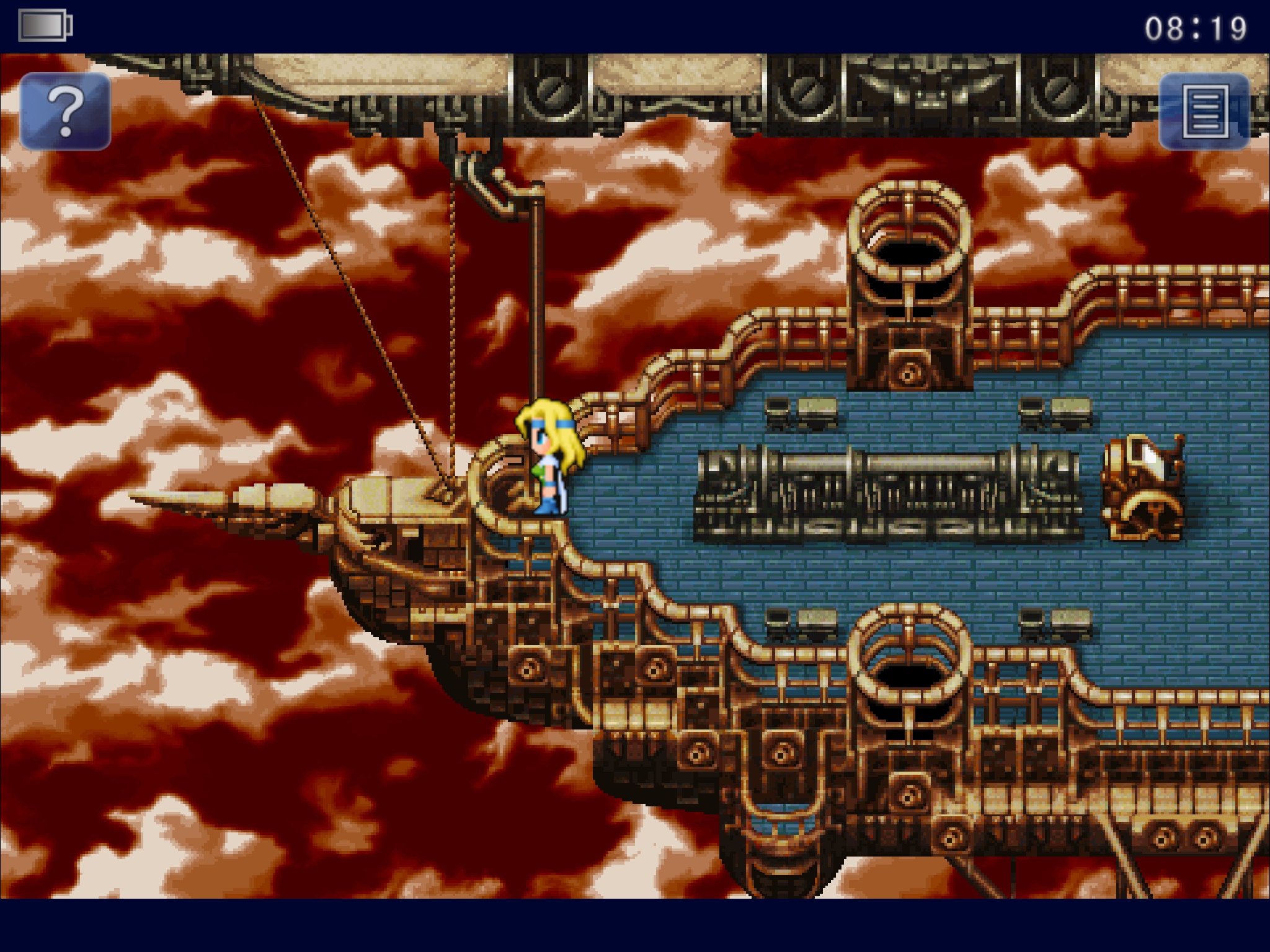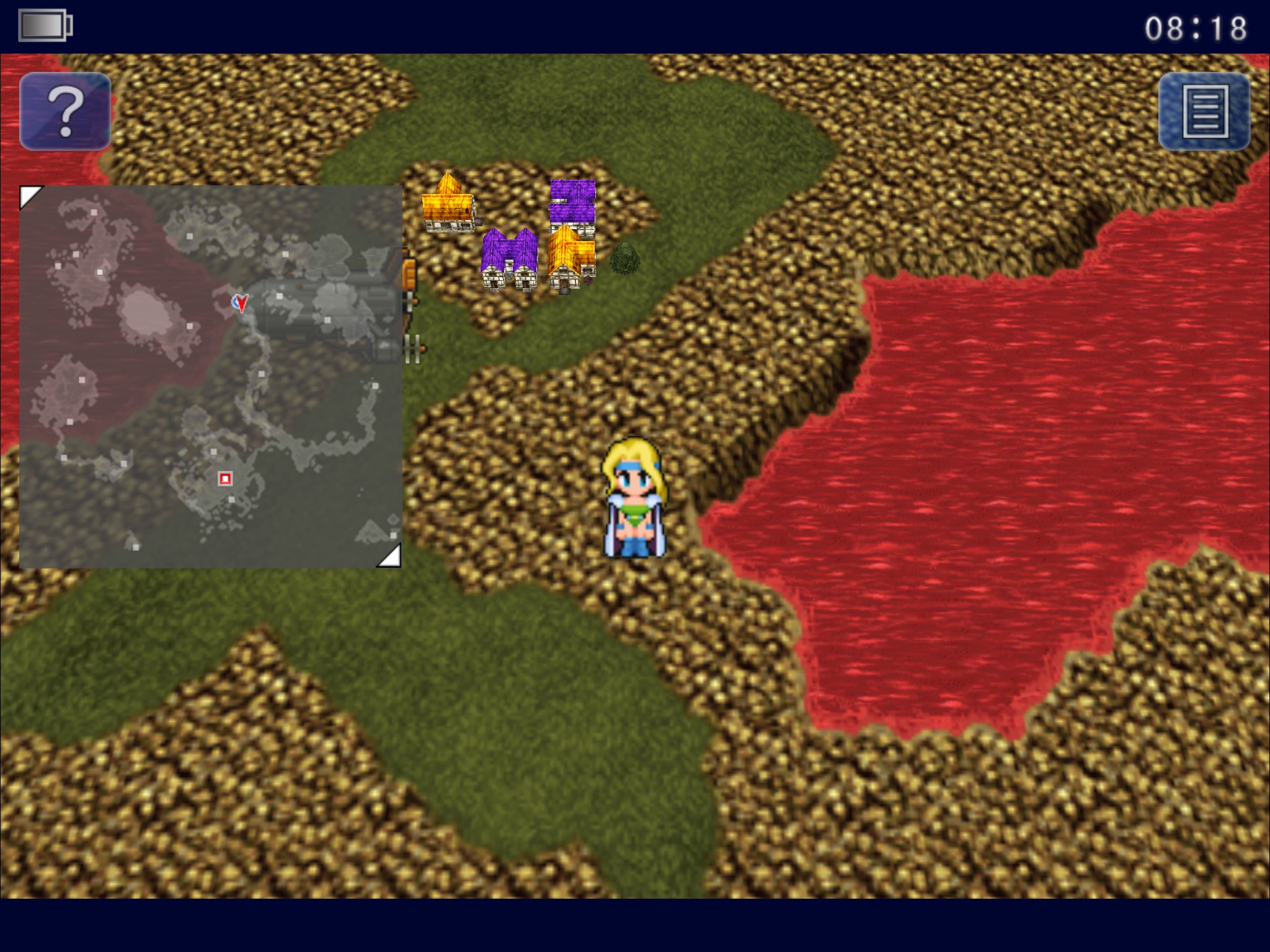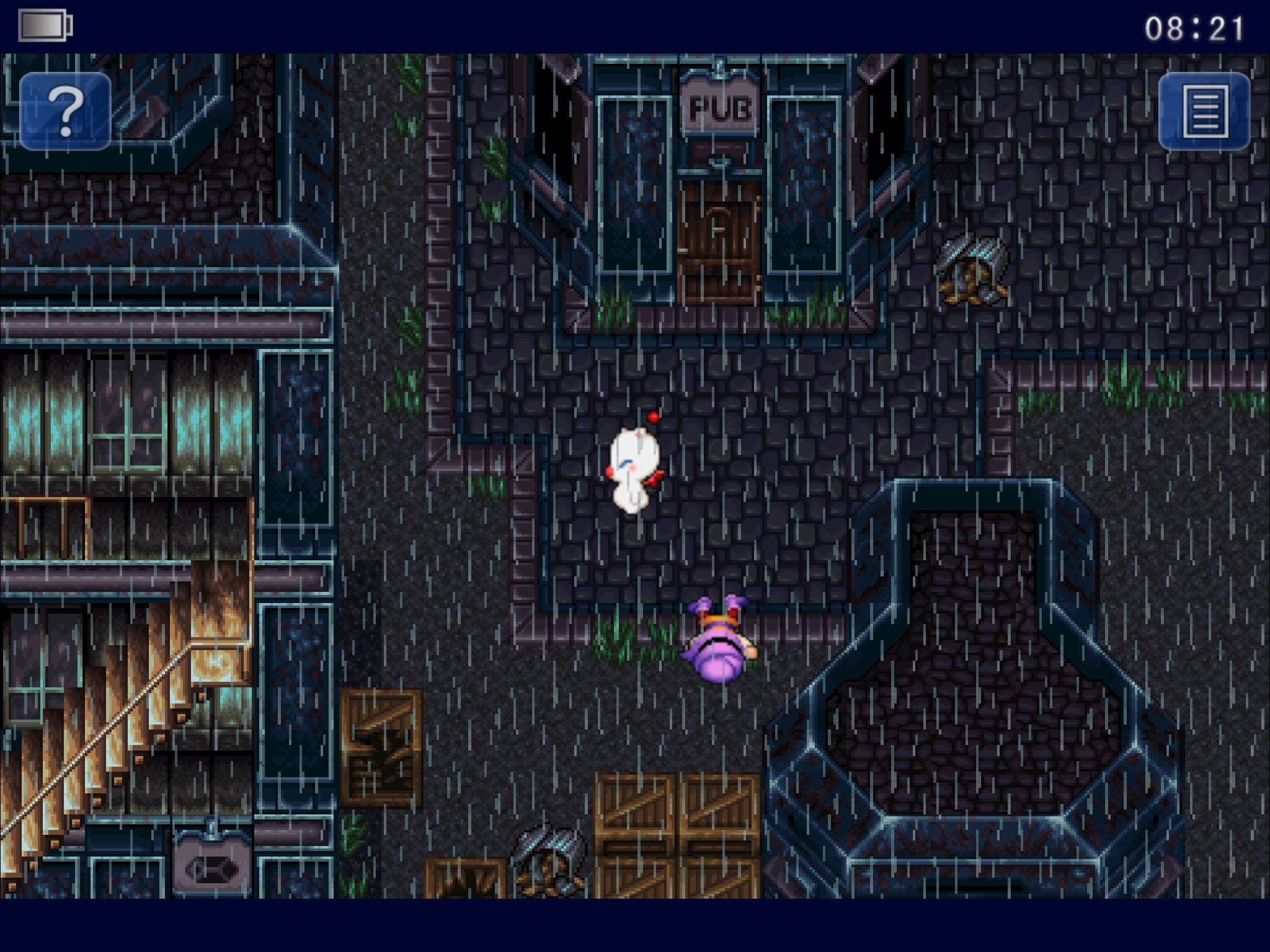 Hello, gentle readers, and welcome to the RPG Reload, the weekly feature where we sound like lines from a self-help book. Each week, we take a look at an RPG from the App Store’s past to see how it holds up on a second, third, or tenth view. It’s a chance to revisit old favorites, reflect on the overall RPG landscape of iOS, or simply to take a deeper dive than our reviews typically allow for. As the main character of the first half of the game, I try to present a balanced plate of RPGs from week to week. If you feel like I’m missing something important, however, please let me know. You can do that by commenting below, posting in the Official RPG Reload Club thread in the forums, or by tweeting me at @RPGReload. As the schedule is planned well in advance, I can’t promise you’ll see your recommendation soon, but it will go on the master list.
Hello, gentle readers, and welcome to the RPG Reload, the weekly feature where we sound like lines from a self-help book. Each week, we take a look at an RPG from the App Store’s past to see how it holds up on a second, third, or tenth view. It’s a chance to revisit old favorites, reflect on the overall RPG landscape of iOS, or simply to take a deeper dive than our reviews typically allow for. As the main character of the first half of the game, I try to present a balanced plate of RPGs from week to week. If you feel like I’m missing something important, however, please let me know. You can do that by commenting below, posting in the Official RPG Reload Club thread in the forums, or by tweeting me at @RPGReload. As the schedule is planned well in advance, I can’t promise you’ll see your recommendation soon, but it will go on the master list.
Well, here we are. At least until we reach the point where Final Fantasy 7 ($15.99) is old enough to qualify for the RPG Reload, this is our last Final Fantasy article. And what better place to leave off than with the installment that many argue is the finest in the series? For however much many people cite the adventures of Cloud, Barret, and Tifa as a major turning point in the series, I firmly believe the true pivot happened in the installment preceding that banner release. Final Fantasy 6 ($14.99) sees the director role move away from series creator Hironobu Sakaguchi for the first time, putting the job in the hands of Yoshinori Kitase, who had previously assisted with the designs of Final Fantasy Adventure, Romancing SaGa, and Final Fantasy 5 ($14.99). Kitase would go on to direct Final Fantasy 7, Final Fantasy 8, and Final Fantasy 10 before moving up to the role of producer and general overseer of the series following Sakaguchi’s exit from Square.
With the change of directors came a noticeable change in the tone of the games. Sakaguchi came from a technology background, having studied electrical engineering in his brief time at university. Particularly early on in the series, his games felt like adaptations of pen and paper RPG campaigns between college friends. It was clear as the series went on that Sakaguchi was taking an interest in delivering a more cinematic experience, but even in his last couple of games, the storytelling was clumsy and ham-fisted. One need only look at the rotating door of sacrificial death in Final Fantasy 4 ($14.99) to see both Sakaguchi’s desire to include more dramatic elements in his stories and his inability to generate those feelings in a satisfying manner.
Yoshinori Kitase, on the other hand, had studied screenwriting and filmmaking at the Nihon University College of Art. He particularly enjoyed sitting in the editor’s chair, playing around with the footage in post-production to maximize its impact on the viewers and their emotions. After graduating from school, he spent a year working at an animation studio before switching to the game industry. He had played and enjoyed Final Fantasy and felt that it showed potential for the future of storytelling in the medium, and in spite of having no computer background whatsoever, he wanted to be a part of that. After a couple of other projects at Square, Kitase worked on a mainline Final Fantasy game for the first time with Final Fantasy 5, where he’s credited as an event planner, a field planner, and a scenario writer.
Now, I don’t want to undersell Sakaguchi here. Relative to much of his competition, Sakaguchi really put a strong effort into his stories, and some of the scenes in his games can be downright poignant. Without his work, Kitase likely wouldn’t even have entered the games industry. But if you can’t spot the Kitase difference in the first ten minutes of Final Fantasy 6, I don’t know what to tell you. From the dramatic flashes of lightning on the title screen to the somber walk through the snowy fields near Narshe while the opening credits rolled, the sixth entry in the series cleared demonstrated a filmmaker’s touch. Players at the time had no idea what they were in for, but the powerful opening certainly hinted at the weighty drama to follow.
Kitase wasn’t alone in the director’s chair for Final Fantasy 6, however. While he was in charge of all things story, characters, and cut-scenes, the battle portion of the game was put in the hands of Hiroyuki Ito, the creator of the Active Time Battle system used in several of the Final Fantasy games. Nobuo Uematsu, the composer of the previous Final Fantasy games, returned to create the soundtrack, while Yoshitaka Amano once again created concept art for the game. Character design was more of a group effort than previous games in the series, with team members encouraged to come up with their own ideas for mini-scenarios and characters. From Sakaguchi, we got Terra and Locke. From Kitase, Celes and Gau. It’s worth noting that two of the characters, Shadow and Setzer, were created by graphic director Tetsuya Nomura. He would take over Amano’s role as character designer in Final Fantasy 7 and beyond before spending the better part of a decade chasing a couple of white whales to no success.
The idea behind Final Fantasy 6 was that every character was the main character. While in practice some characters took greater roles than others, this game was in my opinion one of the more successful approaches to an ensemble cast. Having everyone create their own characters and scenarios as though their characters were the leads gave Kitase a lot of great material to work with as he stitched the whole thing together. Apart from the bonus characters, everyone gets at least a little time to shine, and you could make a strong case for five or six of them as potential main characters. I don’t think it’s even possible to choose just one specific character, though Terra is often used as the game’s representative. You can finish the game without her, however, so she’s certainly not a conventional protagonist. In the end, it feels like the game is largely split in half, with Sakaguchi’s Terra leading the first portion of the game before giving way to Kitase’s Celes in the latter half. I’m not sure if that was intentional, but it’s certainly quite fitting.
Unlike many other games in the Final Fantasy series, Final Fantasy 6 apparently had a mostly painless development. Production began soon after Final Fantasy 5 was wrapped up, and the game was completed in just one year. It released on in Japan on the Super Famicom in April of 1994, with a North American release following later that year. The English translation was leaps and bounds better than that of the previous Final Fantasy game to release in North America thanks to the efforts of localizer Ted Woolsey. He did a wonderful job, particularly given the limited time afforded to him and the bizarre restrictions from Nintendo at the time. While his work on the game is controversial among certain Final Fantasy fans thanks to taking a few liberties here and there, there weren’t many games with better translations at the time. The game released in North America as Final Fantasy 3 on October 11th, 1994. In both regions, it was met with tremendous critical acclaim, but with console RPGs yet to take off in North America, it sold the overwhelming bulk of its copies in Japan. This version of the game was also released on the Wii Virtual Console in all regions, and the Wii U Virtual Console in Japan.
Final Fantasy 6 has been re-released and ported several times. The first occasion was an absolutely dreadful port to the PlayStation by TOSE in 1999. The Playstation version added a bestiary, two FMV scenes to bookend the story, an art gallery, and a few other minor features. Unfortunately, TOSE did their usual job with the port, introducing a bunch of technical problems such as excessive loading times, poor audio emulation, and several bugs. This version of the game was sold in a package with Final Fantasy 5 as Final Fantasy Anthology in North America and Europe. To this day, it remains the worst version of Final Fantasy 6 by a good measure, and unless someone actively tries to make something worse, I imagine it will retain that title forever. You can still buy this version of the game on PSN, but since it has all of the same problems as the original PlayStation release, you really shouldn’t.
TOSE did a far better job with their Game Boy Advance port of the game, which released in Japan in 2006 with releases in North America and Europe the following year. One of the last Game Boy Advance games worth paying attention to, Final Fantasy 6 Advance added some welcome extra content to the game while making very few sacrifices. The main disadvantage to this version is the mixed results of moving the game’s stunning soundtrack over to the more limited Game Boy Advance hardware. Some songs sound a little better than they originally did, while others sound much worse. The visuals received some minor enhancements, but for the most part, this is Final Fantasy 6 as most would like to remember it. Many people consider this the the best version of the game released so far. It’s available on the Wii U Virtual Console in Japan only.
The game received its most substantial changes when it came to mobile. Releasing on Android and iOS in early 2014, the mobile version of Final Fantasy 6 uses the same hodge-podge approach to the visuals that Final Fantasy 5‘s mobile version did. While the character sprites themselves are, in my opinion, quite good, there’s an ugly filter applied to them. Worse, background elements are often done in different styles and resolutions, creating a significantly less attractive package when compared to other versions. Seeing Kazuko Shibuya’s high-res take on her original character sprites is a treat, and the backgrounds and monsters look great, but the slapdash way everything is thrown together pulls this version down badly. It’s a shame, because in other respects, this is the version to own. It has all of the extra content from the GBA version, the music sounds great, and the interface has been smartly reworked for touchscreens. This version was later ported to Windows PCs, to the horror of many.
Thus, there is no definitive version of this game. For my money, I prefer the original Super NES version of the game, bugs and all, but I also enjoyed what the Game Boy Advance and mobile versions brought to the table. The only way you can go really wrong is with the PlayStation/PSN version, and I know some people who can even tolerate that disaster. Go with whichever one you can play, I suppose, as any Final Fantasy 6 is better than no Final Fantasy 6. It’s worth noting the mobile version has seen excellent post-release support from Square Enix, so I suspect we won’t have to worry about it going to the app graveyard anytime soon.
All of those words and I haven’t really talked about the game itself at all. As you may or may not know from previous Reloads, I was already a fan of the Final Fantasy series well before Final Fantasy 3/6 came out. I liked Final Fantasy 1 a lot, and Final Fantasy 2/4 blew me away with its characters, music, and story. Look, I was twelve. Anyway, I was really attached to the cast of the previous game released in North America, and although there was no question I was going to buy the new game, I was extremely skeptical of it. I felt there was no way it could top the previous game, particularly with regards to the characters. Who were these new people? Why couldn’t I just get the continuing adventures of Cecil, Kain, and the gang? I got my wish eventually, though looking back I probably shouldn’t have been holding onto a monkey’s paw when I made it.
After I bought Final Fantasy 3/6 from my local video rental shop on its release day for the low price of $94.99 plus taxes, I took it home and started it up with a jaded perspective. Look, I was fifteen. It only took a few hours before I was completely hooked on this new world and its cast. The mysterious mage Terra, the dashing treasure hunter Locke, the lecherous king Edgar, and the delightfully evil anarchist Kefka all helped create a strong first impression of the game for me. I grew obsessed with the game, sniffing out every secret, chasing down every rumor, and for the first time ever for me in an RPG, maxing out all of the characters’ levels, and the game’s clock along the way.
Every event in the game hit me with force. I laughed at the goofy Ultros, stared in awe at the ambitious opera scene, and cried at the fate of Cyan’s family. When Kefka finally lays out all of his cards and makes his big play, my jaw hit the floor. Playing through the game, I felt happiness, anger, relief, despair, sadness, the whole spectrum of feelings. In hindsight, I might have been the perfect age to experience this game’s story in a sincere way. When I finally finished it, I chiseled Final Fantasy 6 in stone in my top 5 games of all-time, certain it would never be leaving that spot if I lived for another century. I even bought the expensive soundtrack, another first for me as far as games were concerned
I wish I could see Final Fantasy 6 with those eyes again. I’m a lot older now. More jaded in some ways, less jaded in others. My perspective has changed, and while I still feel some parts of Final Fantasy 6 are outstanding, it doesn’t speak to me the way it once did. I find Terra annoying rather than sympathetic. Locke’s devotion to his deceased lover feels less like a heroic defiance of fate and more like a weird obsession. Don’t even get me started on Edgar and his, er, youthful interests. A few characters play better with me these days, though. Cyan’s story feels even more tragic now that I have a family of my own. Sabin comes off as possibly the most well-adjusted member of the whole cast. I still think Setzer’s a creep, but I’m more open to his late-game redemption. The overall plot remains bold, particularly in its own context, but once you’ve seen a twist enough times, it loses most of its power.
On the positive side, I remain impressed with how the game plays with pacing. The first half of the game, with its largely forced party compositions and linear progression, feels like the logical next step from Final Fantasy 4. The second half of the game, with its freedom to customize your party and tackle content in the order you’d like, feels like it’s carrying on from Final Fantasy 5 in many ways. The soundtrack is still simply fantastic, perhaps Uematsu’s strongest work of his career. Giving every character a theme of their own was a brilliant idea, the final boss music is superb, and the song that plays over the ending that chains everything together into a single medley is the cherry on the sundae. The battle system and character building elements have held up well enough. The gameplay mechanics weren’t very remarkable then, and aren’t now, but perhaps sticking closely to the gameplay script is what has helped Final Fantasy 6 stay as relevant as it has. I’d have loved to have seen a Final Fantasy 4 DS-style remake that added some extra punch to the game, though.
Final Fantasy 6 isn’t in my top 5 games of all-time anymore. It’s not even in my top 5 RPGs of all-time. Heck, it’s not even my favorite Final Fantasy game anymore, having had the spot taken out from under it by Final Fantasy 5. I think it’s still a great game, even if it gets that accolade more by its presentation than its mechanics, and I think if you’re in the right place in your life, its themes can hit as hard as ever. I certainly don’t dislike playing it. There’s a rhythm to it, and a sort of comfort, that lets me chew through it in a happy state. If I close my eyes, I can almost slip back to those cold winter nights of grinding against Brontsaurs and T-Rexes to max out my team. But much of my affection for this game was bound up in emotions that the game can no longer tease out of me, which makes playing it again as melancholic as it is nostalgic. Perhaps this is the fate of all artifacts that have a great impact on us? We change, the stimulus in question does not, so it only makes sense that it can’t elicit a similar response. The dangers of plumbing retro games, my friends.
Anyway, that’s my take on Final Fantasy 6. I could write twice as much, but half as many would read it, so I should probably save the rest for another time. What do you all think of the game? When and where did you first experience it? Do you feel it holds up for you? I want to know, so be sure to leave some comments below, post in the Official RPG Reload Club thread, or tweet me at @RPGReload. We’re recording a podcast about this game this weekend, so if you have any questions about Final Fantasy 6 or any other topic, send an email to [email protected] and we’ll happily answer. As for me, I’ll be back next week with our new monthly feature. Yes, we’ve officially closed the books on the second year of the RPG Reload, which means I have to come up with new wacky ideas. Fortunately, I’m chock-full of them. Thanks for reading!
Next Week’s Reload: Something, probably!
